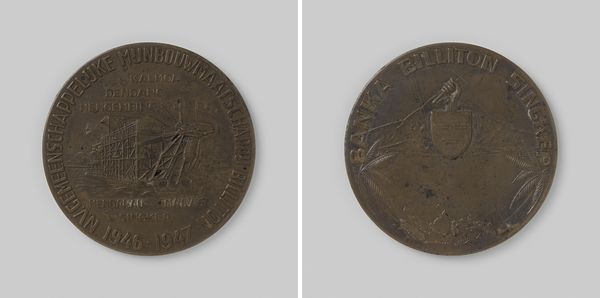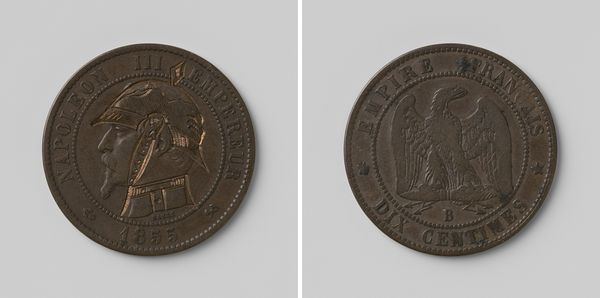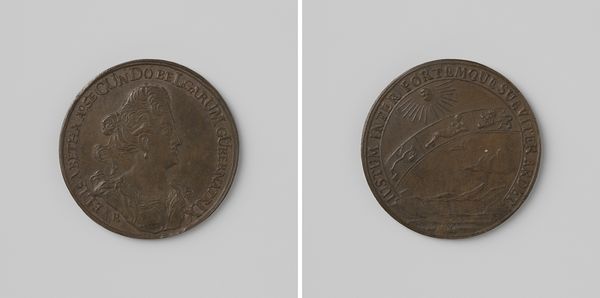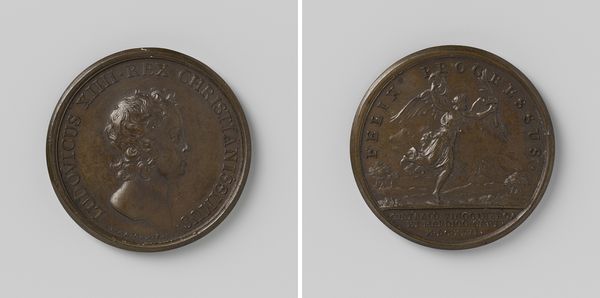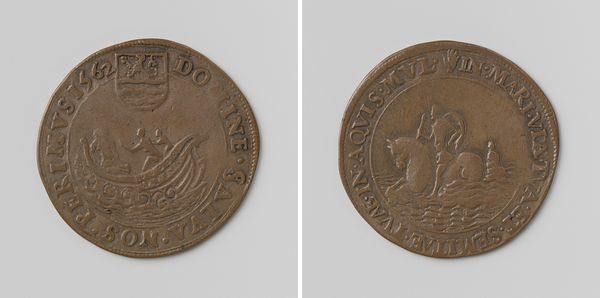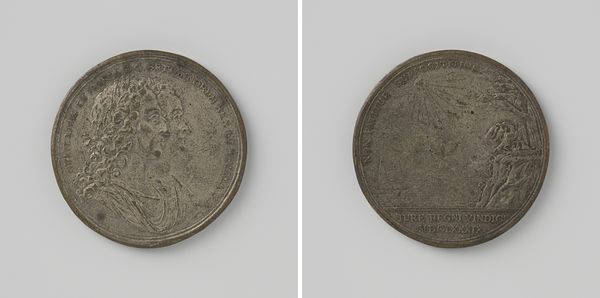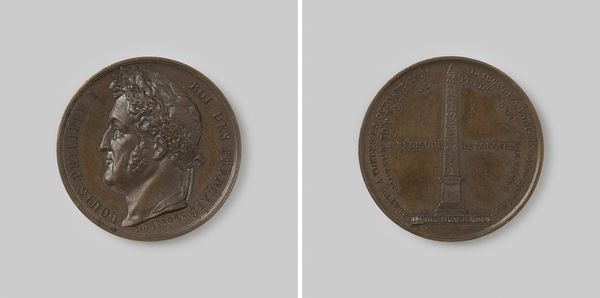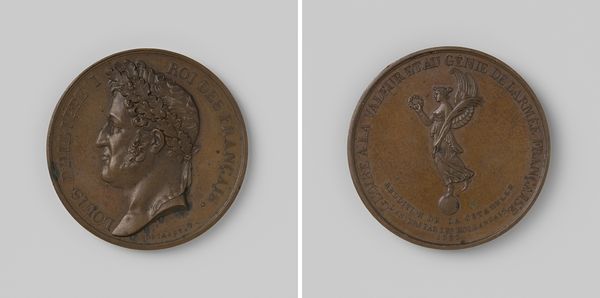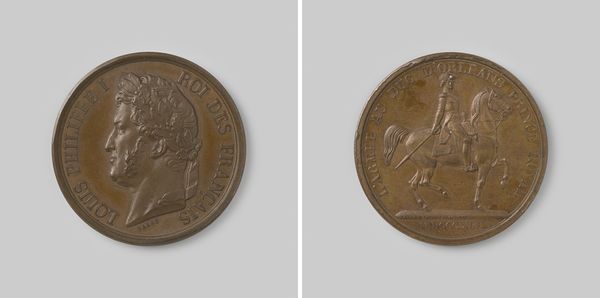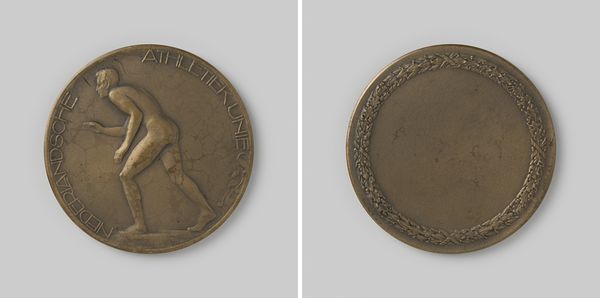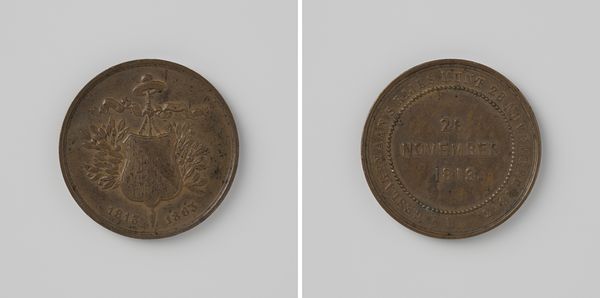
metal, engraving
#
portrait
#
neoclacissism
#
metal
#
history-painting
#
coin
#
engraving
Dimensions: diameter 3 cm, weight 9.18 gr
Copyright: Rijks Museum: Open Domain
Editor: Here we have a bronze coin from 1856, designed by Jean-Jacques Barre, entitled "Tien centimes van Napoleon III Bonaparte, keizer der Fransen" -- "Ten cents of Napoleon III Bonaparte, Emperor of the French." The age and bronze construction give it a certain weight, literally and figuratively. What strikes you about this seemingly ordinary object? Curator: The material of this coin, humble bronze, speaks volumes. Here is an object circulating amongst the masses, intended for the smallest of transactions, yet stamped with the Emperor’s image. This collapsing of high and low, of imperial power and everyday use, is fascinating. Editor: So you're saying its value isn’t just monetary, but also in its symbolism of material use? Curator: Precisely. Consider the means of production: the mining of the ore, the smelting, the striking of the coin with dies – all these industrial processes are implied. And who were the laborers involved? What were their working conditions? It’s a tiny object that opens up a vast web of social and economic relations during the Second Empire. Also, think about its circulation. How many hands did this pass through? What sort of economic and social exchanges were enabled with it? Editor: It's easy to forget the hands that created these kinds of mundane things. Curator: Exactly! These material remnants embed economic policies and political ideology, which create social values through their continued usage and distribution. Editor: This changes the way I think about not just art but even everyday objects! Thank you. Curator: Indeed, thinking materially illuminates histories usually overlooked.
Comments
No comments
Be the first to comment and join the conversation on the ultimate creative platform.
